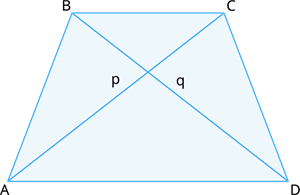UPSKILL MATH PLUS
Learn Mathematics through our AI based learning portal with the support of our Academic Experts!
Learn moreA trapezium is a quadrilateral whose two opposite sides are parallel, but the other two are not parallel.
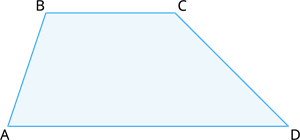
AD and BC are two parallel edges are termed as bases.
AB and CD are two non-parallel edges are termed as lateral sides.
In trapezium, whose lateral sides (AB) = (CD) are equal, then the trapezium is known as isosceles trapezium.
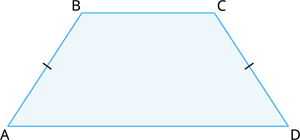
Properties:
- The bases of the trapezium are parallel to each other (AD || BC)
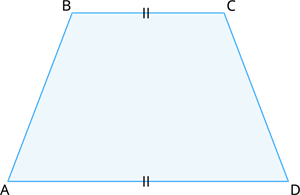
- The sum of its angles is 360°.
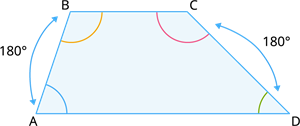
- The diagonals 'p' and 'q' of the regular(all sides and angles are equal) trapezium bisect each other. In regular trapezium, (AB = BC = CD = DA) and (∠A = ∠B = ∠C = ∠D).
